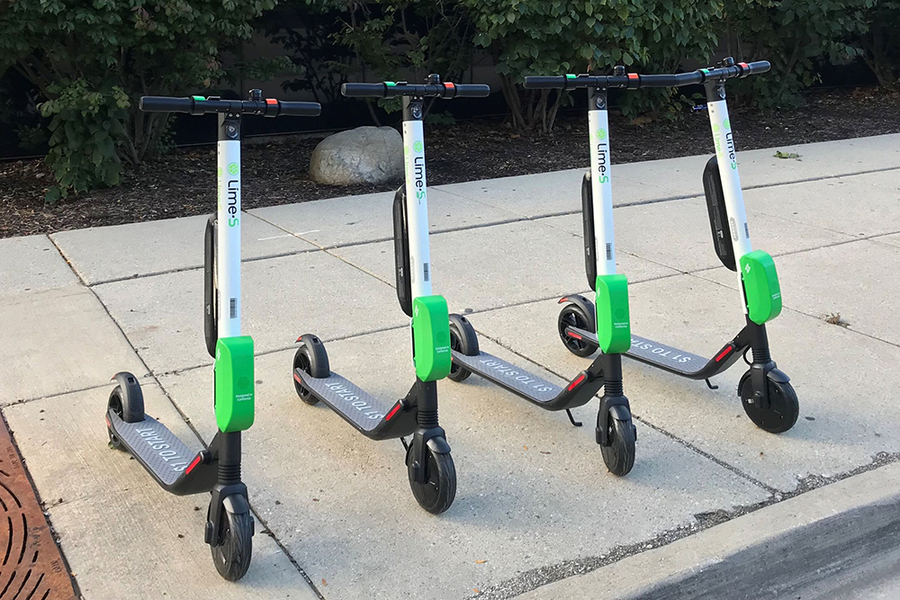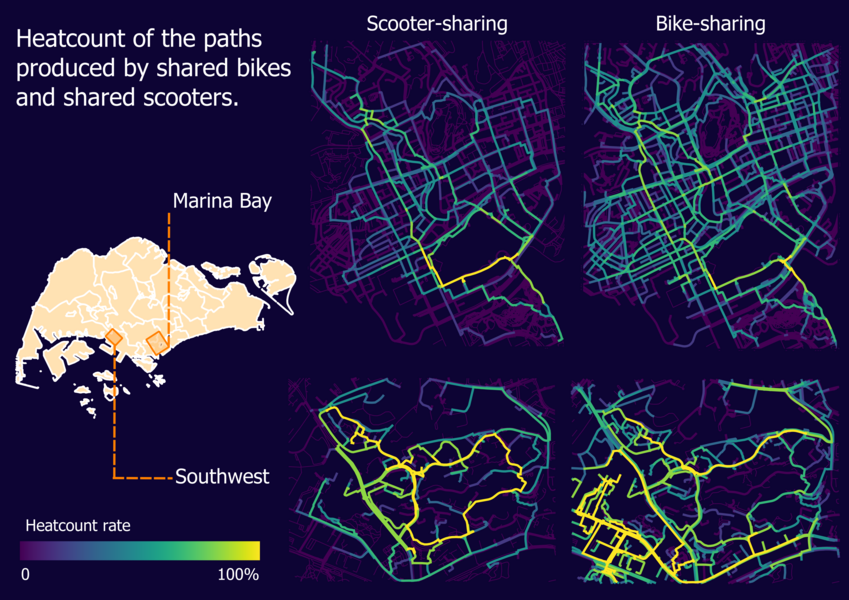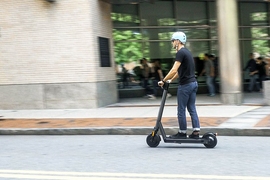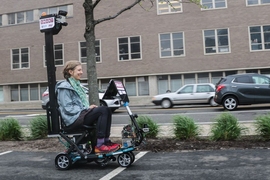While ride-sharing services like Grab, Uber, and Gojek have become a pervasive part of life, many countries in the Asia Pacific region are still unconvinced when it comes to micro-mobilities such as bike and scooter sharing. While the convenience offered by these is great, especially in this Covid-19 era when people may remain wary of crowding in buses and metro trains, there is a need for in-depth knowledge of these new transportation options to help guide policy and regulation.
A group of scientists in the Senseable City Lab at MIT and the Future Urban Mobility (FM) Interdisciplinary Research Group at the Singapore-MIT Alliance for Research and Technology (SMART), MIT’s research enterprise in Singapore, set out to better understand the phenomenon and inform policy-making through a comparative analysis of bike-sharing and scooter-sharing activities in Singapore.
The researchers shared their findings in a paper titled “Understanding spatio-temporal heterogeneity of bike-sharing and scooter-sharing mobility” published in the journal Computers, Environment and Urban Systems. The study is based on real usage records containing location and time of departures and arrivals in two distinct areas in Singapore.
“We constructed historical trajectories of the bike-sharing and scooter-sharing trips and compared usage patterns of the two systems at the Marina Bay area and the NUS campus,” says Rui Zhu, a postdoc at SMART FM. “Our results showed increased sharing frequency and decreased fleet size for scooter-sharing, suggesting that it performs better than bike-sharing.”
More specifically, the sharing frequency was increased from less than one time per day for bike-sharing to more than three times per day for scooter-sharing, but the researchers believe that can be improved even further to create a more profitable service.
The study also found that shared scooters in Marina Bay were frequently left away from their designated parking spaces or charging stations, indicating costly and labor-intensive maintenance since employees need to collect and transport scooters between stations continuously. However, the statistics also showed that over 28 percent and 26 percent of trips departed from and arrived at non-stations respectively, suggesting that users actually utilized most of the inappropriately returned scooters.
In addition, the study revealed quantitative changes in trips over time, distances, and duration, and the influence of weather on the demand of micro-mobilities.
“In Singapore and a few other cities, dockless bike-sharing systems rose and fell in just one year, followed by an explosion of docking scooter-sharing systems. But we didn’t have the necessary insights for appropriate business and policy decisions,” Zhu explains. “Our study goes deeper into the problems and possibilities of micro-mobility sharing and suggests how these services can be improved.”
To facilitate a sustainable scooter-sharing service, the researchers suggest optimizing the fleet size of stations and their locations, regulating returning behaviors more strictly, enabling scooters to have autonomous repositioning functionality, and increasing the useful battery life of scooters.
To increase battery life, they suggest installing a photovoltaic module on scooters for solar charging during trips and parking time or equipping conventional dock-based stations with grid charging or solar charging platforms, allowing for an environmentally friendly solution that will be able to reduce carbon footprints.
While the business model and user behavior greatly impact the success of mobility-sharing services, government policy also plays a significant role. Supportive policies or regulations on controlling fleet sizes and limiting usage to discrete areas are huge drivers for the sustainable development of the new transportation modes. With this study, SMART’s researchers hope to fill existing gaps in knowledge about micro-mobility sharing to help inform policy decisions.
SMART was established by MIT in partnership with the National Research Foundation of Singapore (NRF) in 2007. SMART is the first entity in the Campus for Research Excellence and Technological Enterprise (CREATE) developed by NRF. SMART serves as an intellectual and innovation hub for research interactions between MIT and Singapore, performing cutting-edge research in areas of interest to both. SMART currently comprises an Innovation Center and six Interdisciplinary Research Groups: Future Urban Mobility, Antimicrobial Resistance, BioSystems and Micromechanics, Critical Analytics for Manufacturing Personalized-Medicine, Disruptive and Sustainable Technologies for Agricultural Precision, and Low Energy Electronic Systems.
The Future Urban Mobility group harnesses new technological and institutional innovations to create the next generation of urban mobility systems to increase accessibility, equity, safety, and environmental performance for the citizens and businesses of Singapore and other metropolitan areas, worldwide.
SMART research is supported by the NRF and situated in CREATE.










